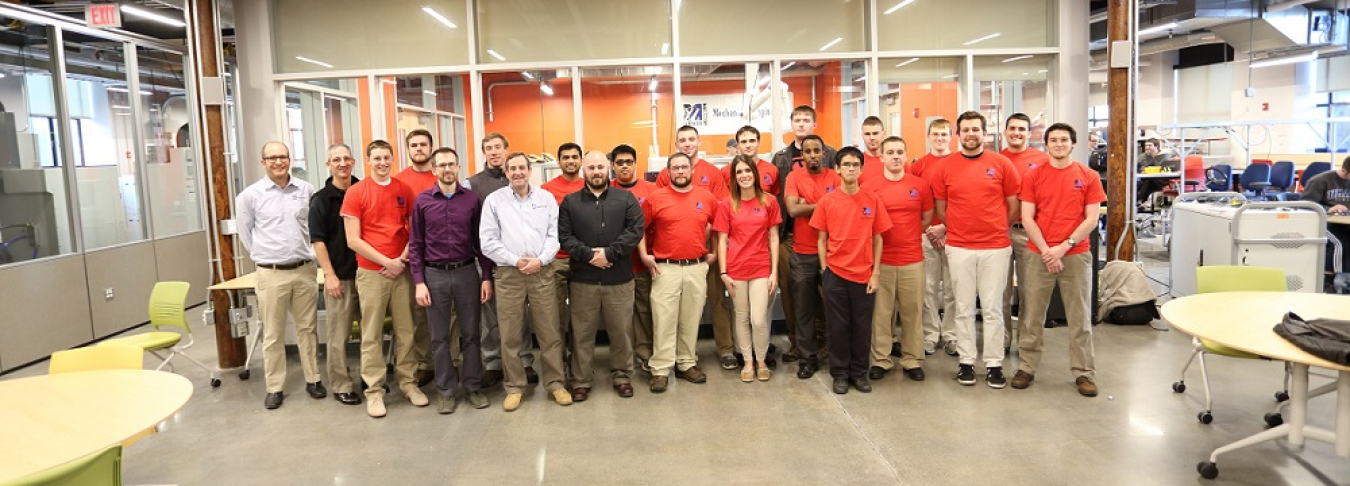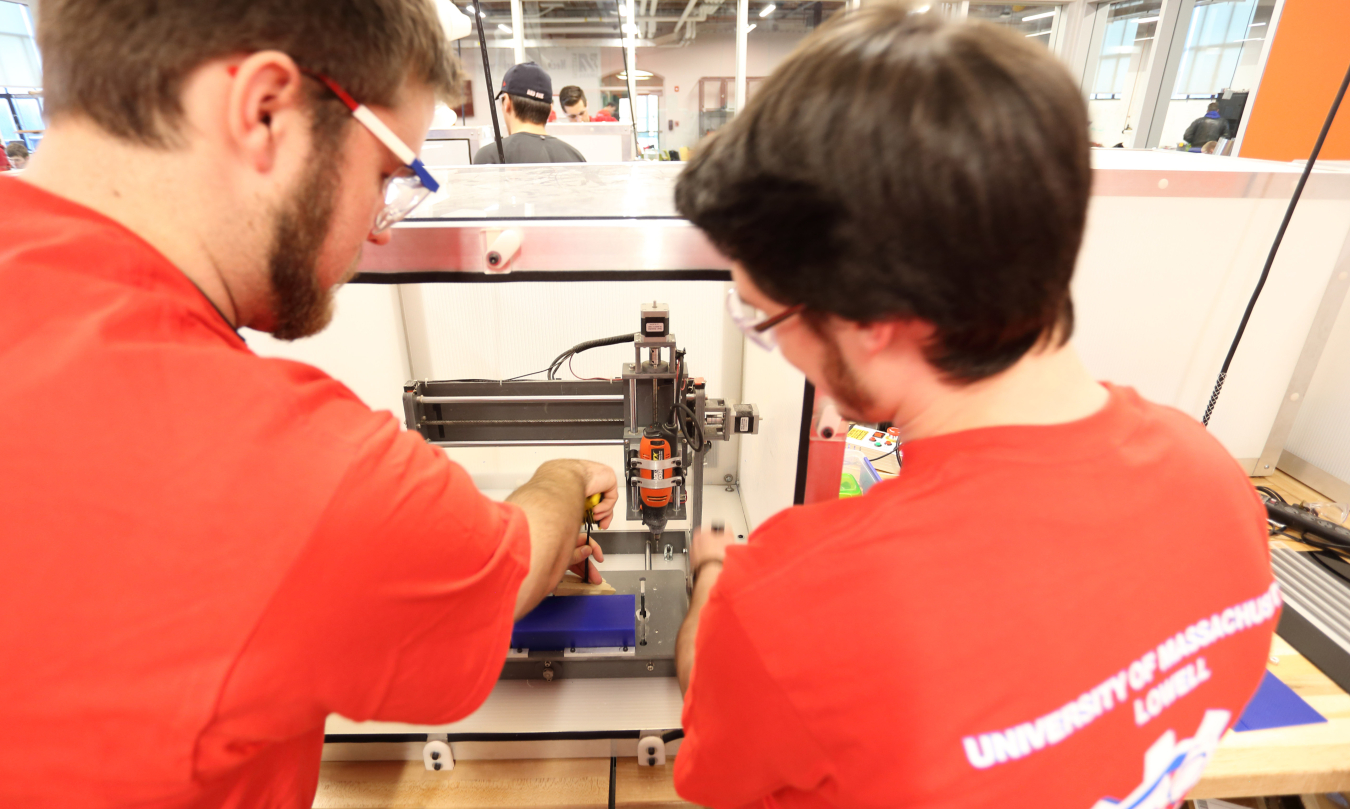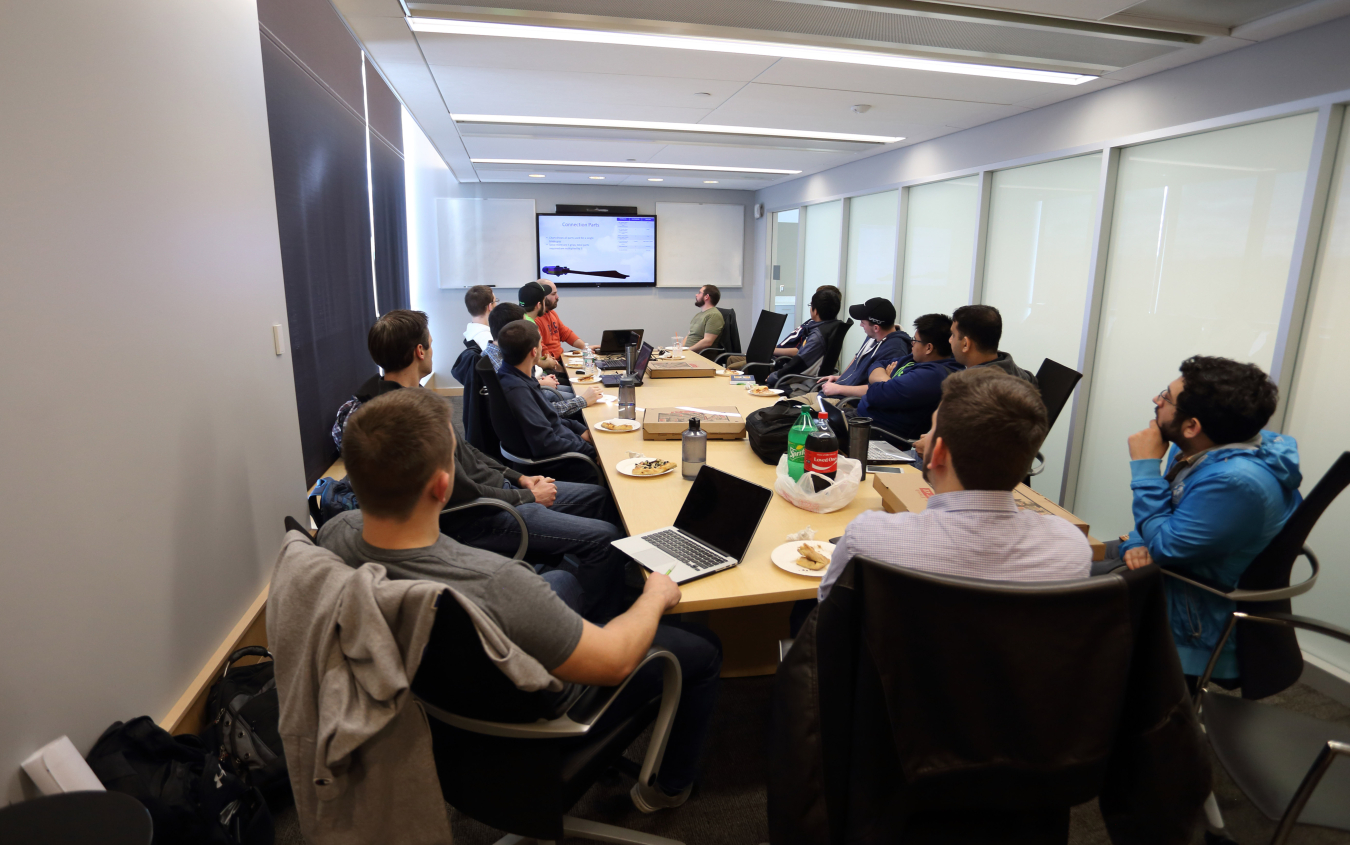
Team roster: Dan Paikowsky, Management; Christian Bain, Entrepreneurship; Noah Meunier, Mechanical Engineering & Management; Bill Hallissey, Electrical Engineering; Zach Anderson, Electrical Engineering; Seth Dabney, Electrical Engineering; Matt Siopes, Electrical Engineering; Nik Patel, Electrical Engineering; Mahed Barre, Electrical Engineering; Kyle Stuart, Electrical Engineering; Linda Pratto, Mechanical Engineering; Patrick Anderson Mechanical Engineering; Chris Illsley, Mechanical Engineering; Dana Pierce, Mechanical Engineering; Evan Copeland, Mechanical Engineering; Sarittick San, Plastics Engineering; Andy Lay, Plastics Engineering; Max McCabe, Plastics Engineering

Team UML-WindHawk (from left to right): E. Copeland, and C. Illsley using on a desktop CNC machine to create a wind turbine blade mold.
The UML-WindHawk electrical team. (from left to right):N. Patel, M. Siopes, K. Stuart, W. Hallissey, M. Barre,S. Dabney working on the electrical generator test bed.

The UML-WindHawk team during their December internal design review. Team UML-WindHawk (from left to right around the table): C. Bain, W. Hallissey, C. Illsley, D. Pierce, P. Anderson, E. Copeland, S. Dabney, M. Siopes, (Z. Anderson), S. San, M. McCabe, A. Lay, N. Patel, M. DiPaola (Invited Guest), and N. Meunier.
The UML-WindHawk mechanical team members constructing a wind turbine blade using fiberglass and epoxy (from left to right): E. Copeland, P. Anderson, D. Pierce and L. Pratto.
TEAM NAME:
Team University of Massachusetts Lowell (UML)–WindHawk
WHY WIND?
America’s first large-scale factory town, the City of Lowell is considered the “Cradle of the American Industrial Revolution.” Water turbines, designed by James B. Francis—after whom the University of Massachusetts Lowell James B. Francis College of Engineering is named—in the early 1800s powered the textile mills of Lowell and are still used today in renewable hydropower applications.
The University of Massachusetts Lowell is committed to pursuing and educating tomorrow’s engineers about innovative energy solutions. In the past decade, wind energy research and education has grown at the university, with projects ranging from wind farm performance modeling to structural health monitoring and self-healing techniques for improving the fatigue life of wind turbine blades. These projects have increased interest in wind power at the university.
PROJECT DESCRIPTION:
The University of Massachusetts Lowell is pursuing a modular wind turbine design that aims to challenge traditional solutions and permanently change the off-grid wind energy field. The approach has multiple applications; however, the team is pursuing a single end user for their initial deployment, with key secondary markets/users in their sights.
GAME PLAN:
The UML-WindHawk business and management team believes that knowing your customers and their needs is critical to success. As such, the team is performing extensive market research into their customers’ energy needs and driving technical decisions informed by these findings. The team has made contact with their primary customer and is participating in active discussions about the technical and business aspects of the solution. By closely working with the end customer, the team is able to experience firsthand the intricacies and challenges of the user-driven product development cycle.
The team’s primary technical strategy is to develop a robust and well-tested turbine for the competition. The team has learned from its experience competing in 2014 and 2015 and plans to arrive at the competition 110% ready for any and all challenges that the competition may present. A key approach to success is constant communication among team members to share challenges and to consult between expertise groups when decisions cross disciplinary boundaries. The team aims to complete the development of their wind tunnel test turbine early in the spring semester and use much of the spring semester to tune and improve their turbine for performance, deployment and robustness. To the UML-WindHawk team, a successfully designed and competition-deployed turbine will be as rewarding as a win.
TEAM STRENGTHS:
The core business and technical components of the competition align well with UML-WindHawk strengths. The team comprises students from both the Manning School of Management and the James B. Francis College of Engineering.
The College of Engineering has strong expertise in composite materials and polymer science. With a nationally renowned plastics engineering program, the team benefits from access to unique manufacturing capabilities. These include a composites laboratory, unique injection molding presses, extrusion lines, and nanomanufacturing facilities.
In addition, the College of Engineering has a strong record of experiential, hands-on education. The team will capitalize on a newly renovated makerspace that houses 3-D printers, printed circuit board mills, as well as desktop and high-end computer numerical control manufacturing facilities. These easily available facilities will benefit the team in their wind turbine product development.
TEAM HURDLES:
The team faces the greatest challenge in the deployment strategy. The team’s eventual customer places significant expectations on the team’s product in terms of robust and reliable deployment. This demanding expectation, combined with the team’s preliminary design, poses the greatest challenge; however, the team feels that with creativity and persistence, they can solve this challenge.
TEAM TAKEAWAYS:
The most important takeaway from this competition is the team development of a robust product that is intimately tied to addressing a user group and their need. Designing products for people is challenging; however, the team is excited to be working closely with their end users in the development of this product. The students are keenly interested in wind power and want to make a real difference in the world.

